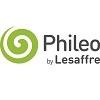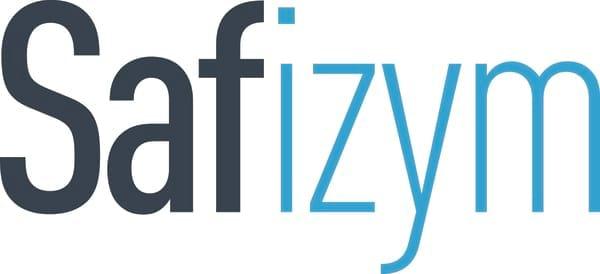
Aminoacids in diet formulation for Dairy Cows
It is well known to us that methionine and lysine are the two most limiting amino acids in the ration dairy animals. Rumen microbial protein is the best source of these two amino acids. In fact, the level of lysine and methionine content of the microbial protein is very similar to that of milk protein.
Enhanced rumen microbial output by way of using various feed additives, including the proper strain of live yeast culture, could be of great value. This will not only help in the increased supply of lysine and methionine but will also improve the fermentation of dry matter in the rumen.
Manget Ram Garg
Its my great pleasure that I have a gotten a chance to give a opinion about my respected sir Mr. M.R Garg about his opinion. Lysine and Methionine requirement from microbial source only covered by up to 12 litre of milk production. A above 12 litre of milk we have to supplement those amino acid from the protected form.
Mohammad Salahuddin MD Salahuddin. It looks very good reporting. In Bangladesh, most of the cases, I mean very common, the crossbred cow produce 12 Lt milk or less. The majority of the cows at household level milk production within 12 ltr. However, those farmers have high yielding cows they must come with real nutrition of dairy cows.In Bangladesh, Dairy nutrition is not addressed much in smallholder farmers cows. So I appreciate your addressing point on methionine and Lysine combination ratio and requirement. in Bangladesh Cattle feed. manufacturer produce a common dairy feed for all milk producing cows. This feed must be supplemented for more than 20 ltr milch cows.
Thank you sir for your nice & real comments. Those cows are high yielding (above 12 litre of milk) must be supplemented with rumen protected amino acid. But actually in Bangladesh most of the feed manufacturer never used such type of amino acid. As a result, all the cows are in high yielding can't meet their amino acid requirement; consequently, result is low milk production with low milk quality ( SNF) and RB also is occured.
Will it be helpful to use unprotected lysine and methionine to produce more microbial protein?
Joe Magadi The exception would be methionine hydroxy analog (MHA) also known as hydroxy methylthio butanoic acid (HMBta). A study in continuous culture fermenters showed that HMBta improved bacterial protein synthesis. (Vazquez-Anon et al., 2001. J. Dairy Sci. 84:159. Work by Baldin and Harvatine at Penn State showed effects of HMBTa on fatty acid biohydrogenation. Both Novus Int. and Addiseo have offer commercial products in liquid and dry form.
If you feed unprotected lysine and methionine, it will be quickly degraded to ammonia in the rumen. It is better to feed rumen protected lysine and methionine.
Or else, supplement live yeast that would help enhancing rumen microbial growth which in turn would supply all essential amino acids to the host animal, including lysine and methionine.
Closer to three years I am working with the supplementation of Aminoacids (Lys\Met) in hot environments conditions (high THI). I learn that work with these Aminoacids in temperate conditions and in grazing systems in these places have better results because the temperature helps in good quality of grains and forages, have better quality that helps to improve the digestibility and the results.
Opposite to this, in hot conditions, the environment affects drastically the dairy cows body function, change and reduce the bacteriological activity as well affect the acidosis, change the hormonal conditions, etc. In stressed hot environments (Tropical, sub-tropical and desert conditions) is not the same management of the feeding, then the practical use of the Aminoacids is not the same and the results can see more in the positive effect of the milk protein, fat, body function and reproduction than in the milk productivity.
In corrals with 35/40 Lt average the main positive factor is relate to the reduction of the use of SBM in about 25% to 30% less, keeping the same productivity. Then the main effect is in the economic factor for the reduction of the Soy, than in the milk production increase.
At the same time for these conditions is advice the use of two types of Yeast to help increase the bacteriological development but also to improve the degradation of the lignin.
As pointed out in some earlier discussions, the use of supplemental by-pass amino acids is economically justified either to promote additional milk production or to allow the use of more economical sources of supplemental protein (amino acids). My exerience is that we usually are more economical in working first with locally available feedstuffs than starting to add the more expensive by-pass amino acid sources but the use of specific amino acid sources is often justified by increases in total milk production. It is always more economical to maximize use of locally available ingredients and then use added specialty ingredients as a targeted nutritional program. One of the earlier posts mentioned the use of correct mineral/vitamin supplements and the addition of high quality supplements will often increase both rumen function and supply the added mineral/vitamin program needed to support higher milk production, increased feed efficiency and support for reproduction. Nutrition is not magic in a bag--it is simple numbers needed to help the cow reach her potential. We need to remember that most ingredients supply both rumen available and rumen by-pass nutrition. We need to balance and use these naturally occurring by-pass nutrients as well as use the rumen produced nutrients before working to add commercial by-pass products.
In my experience, the use of protected amino acids (lysine and methionine) can be useful economically, and in the aspect of reproduction in high producing cows. But it is very important to consider the kinds of protein sources in the diet. In addition, to pay attention to NFC is very important.
From personal experience in both temperate and tropical conditions, what is more important is understanding when to introduce protected Methionine, not lysine, in the ration. Optimizing the rumen condition to achieve optimum yields of microbial protein should be the main target. And, we can easily achieve this with very little or no soya or other expensive sources of by pass protein in the ration.
Most herd can formulate a more cost effective ration by target feeding of the right type of protected Methionine in place of expensive by pass protein sources like soya etc. Unfortunately, most nutritionist are obsessed with feeding soya and other expensive sources of by pass protein. The consequence of which is unnecessary high feeding cost to the farmer.












